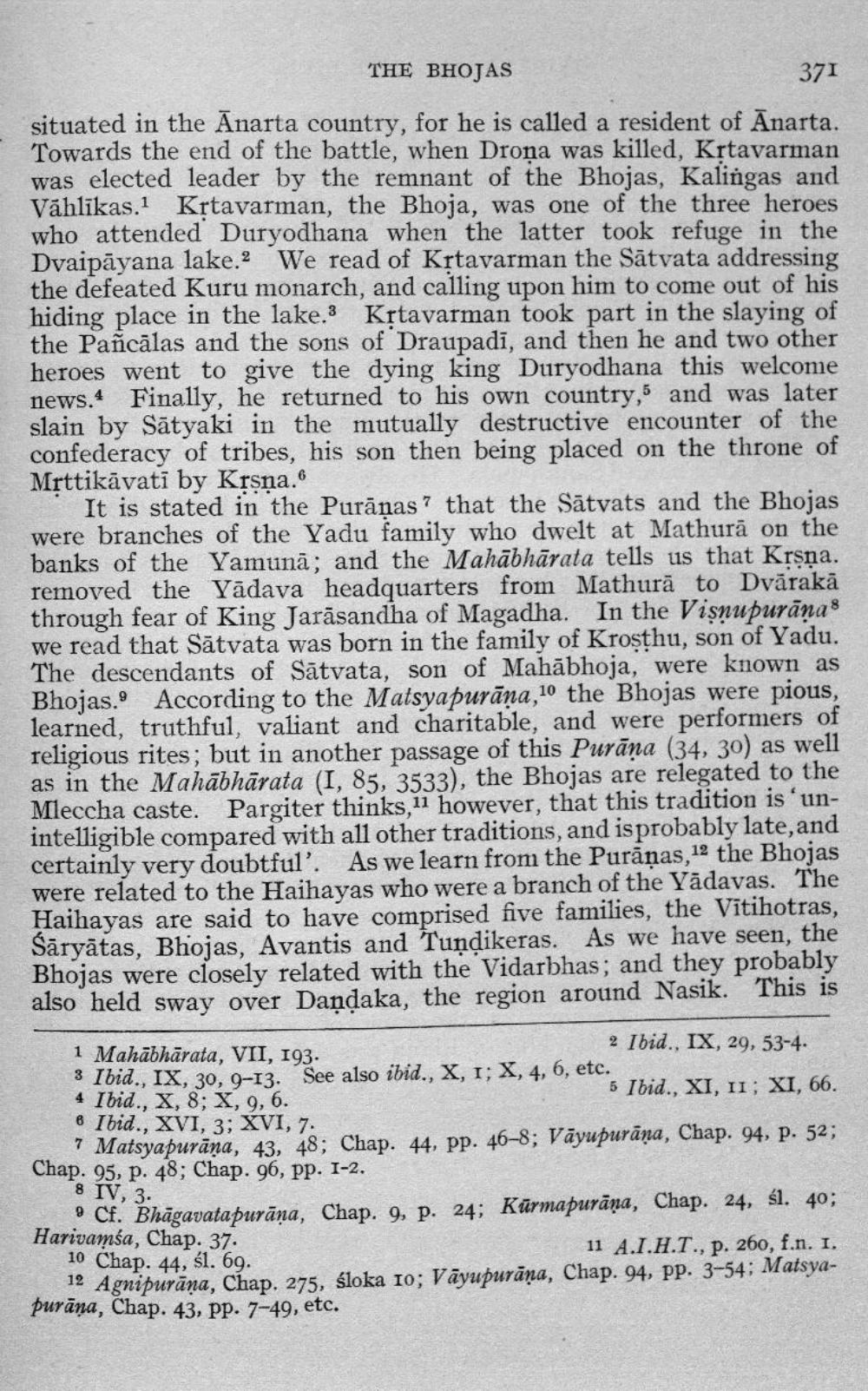________________
THE BHOJAS
371
situated in the Anarta country, for he is called a resident of Anarta. Towards the end of the battle, when Drona was killed, Kṛtavarman was elected leader by the remnant of the Bhojas, Kalingas and Vählikas.1 Kṛtavarman, the Bhoja, was one of the three heroes who attended Duryodhana when the latter took refuge in the Dvaipayana lake. We read of Krtavarman the Satvata addressing the defeated Kuru monarch, and calling upon him to come out of his hiding place in the lake. Kṛtavarman took part in the slaying of the Pañcālas and the sons of Draupadi, and then he and two other heroes went to give the dying king Duryodhana this welcome news. Finally, he returned to his own country,5 and was later slain by Satyaki in the mutually destructive encounter of the confederacy of tribes, his son then being placed on the throne of Mrttikavati by Kṛṣṇa.
6
It is stated in the Puranas' that the Satvats and the Bhojas were branches of the Yadu family who dwelt at Mathura on the banks of the Yamuna; and the Mahabharata tells us that Kṛṣṇa. removed the Yadava headquarters from Mathura to Dvārakā through fear of King Jarasandha of Magadha. In the Visnupurānas we read that Satvata was born in the family of Krosthu, son of Yadu. The descendants of Satvata, son of Mahābhoja, were known as Bhojas. According to the Matsyapurana,10 the Bhojas were pious, learned, truthful, valiant and charitable, and were performers of religious rites; but in another passage of this Purana (34, 30) as well as in the Mahabharata (I, 85, 3533), the Bhojas are relegated to the Mleccha caste. Pargiter thinks,11 however, that this tradition is 'unintelligible compared with all other traditions, and is probably late, and certainly very doubtful'. As we learn from the Puranas, 12 the Bhojas were related to the Haihayas who were a branch of the Yadavas. The Haihayas are said to have comprised five families, the Vitihotras, Saryātas, Bhojas, Avantis and Tundikeras. As we have seen, the Bhojas were closely related with the Vidarbhas; and they probably also held sway over Dandaka, the region around Nasik. This is
2 Ibid., IX, 29, 53-4
1 Mahabharata, VII, 193.
3 Ibid., IX, 30, 9-13. See also ibid., X, 1; X, 4, 6, etc.
4 Ibid., X, 8; X, 9, 6.
5 Ibid., XI, 11; XI, 66.
e Ibid., XVI, 3; XVI, 7.
7 Matsyapurana, 43, 48; Chap. 44, pp. 46-8; Vayupurana, Chap. 94, p. 52; Chap. 95, p. 48; Chap. 96, pp. 1-2.
8 IV, 3.
9 Cf. Bhagavatapurana, Chap. 9, p. 24; Kurmapurana, Chap. 24, sl. 40; Harivamsa, Chap. 37.
10 Chap. 44, $1. 69.
11 A.I.H.T., p. 260, f.n. 1.
12 Agnipurana, Chap. 275, śloka 10; Vayupurana, Chap. 94, pp. 3-54; Matsyapurana, Chap. 43, pp. 7-49, etc.




